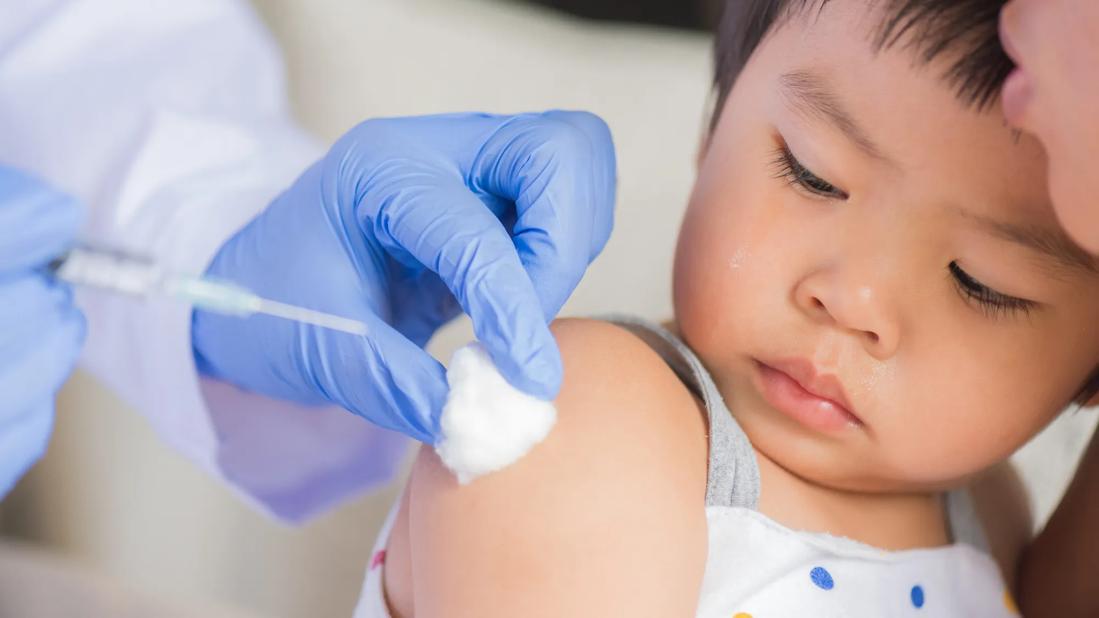Cleveland Clinic’s new Global Director of Vaccine Development outlines plans, priorities

The confluence this summer of the ongoing coronavirus pandemic, outbreaks of monkeypox and pediatric hepatitis and the resurgence of polio highlight the potential for existing and emergent pathogens to cause disruption and raise anxiety on a global scale.
Advertisement
Cleveland Clinic is a non-profit academic medical center. Advertising on our site helps support our mission. We do not endorse non-Cleveland Clinic products or services. Policy
In recognition of the urgent need to improve defenses against infectious diseases, Cleveland Clinic has appointed Ted Ross, PhD, a renowned scientist with expertise in virology, vaccines, immunology and microbiology, to the new position of Global Director of Vaccine Development.
Working closely with researchers across Cleveland Clinic, including the Global Center for Pathogen and Human Health Research, Dr. Ross will lead development of novel vaccine platforms for a variety of infectious diseases, including influenza, HIV and COVID-19. A major focus of his research is the creation of a more advanced, longer-lasting flu vaccine to protect against multiple viral strains.
Dr. Ross holds a leadership role in the National Institutes of Health’s Collaborative Influenza Vaccine Innovation Centers (CIVICs) network, which is designing next-generation, universal flu vaccines. He also participates in vaccine working groups at the U.S. Centers for Disease Control and Prevention and the World Health Organization and serves as President of the International Society for Vaccines.
Prior to joining Cleveland Clinic, Dr. Ross was the Georgia Research Alliance Eminent Scholar of Infectious Diseases and Director of the Center for Vaccines and Immunology at the University of Georgia.
In this in-depth conversation with Consult QD, Dr. Ross discusses his research plans and the future of vaccine development.
Dr. Ross: Most of my previous vaccine research has involved preclinical models, but in the last five or six years we’ve started doing human studies, which will be the norm as we move forward. The University of Georgia doesn’t have a large clinical teaching hospital so we had to invent our own clinics right out of the laboratory. I hired research nurses and phlebotomists and we started doing our own human studies, bringing in volunteers from the public.
Advertisement
Cleveland Clinic offers a huge opportunity for human trials with its hospital network, particularly its international components. My title at Cleveland Clinic is Global Director of Vaccine Development, so I intend to work on global pathogens at global locations. Being able to do vaccine studies around the world and expanding through this network is intriguing. I have collaborators in Columbia and Puerto Rico, but the great connection with Cleveland Clinic Abu Dhabi will bring a new focus on infectious diseases that emerge out of Africa and the Middle East.
Who knows what the next pandemic might be, but we’ll be able to test vaccines in multiple hospitals around the world. Cleveland Clinic already has the infrastructure in place. That was attractive. Cleveland Clinic’s Florida Research and Innovation Center, where my lab will be based, has a Biosafety Level 3 facility and a biorepository. And with the expansion of research facilities at the Lerner Research Institute in Cleveland, where I’ll also be spending time, the ability to meet GMP [Current Good Manufacturing Practice] standards will be built in, which will allow us to make human- grade pharmaceutical products that could be tested in-house.
Dr. Ross: I trained as a molecular virologist for my PhD. As a post-doc in the mid- to late-1990s, I was primarily focused on HIV and AIDS. I was recruited to the Emory [University] Vaccine Center, which was a brand new vaccine development center that was started in 1999. Their major focus was still on HIV and AIDS, but in 1997 there had been a very large outbreak of avian flu in Hong Kong and Southeast Asia. Emory and the Centers for Disease Control were intertwined, and they were very concerned that this was going to be comparable to the 1918 flu pandemic, because the mortality [of the H5N1 avian influenza virus] was over 75% and it seemed to be highly transmissible. I got involved in trying to understand exactly why this virus is so pathogenic. That’s how I got drawn into influenza research.
Advertisement
Dr. Ross: I started my first lab at the University of Pittsburgh. When the university started the Center for Vaccine Research in 2006, ours was one of the founding labs that moved into the space. We were totally focused on vaccine design and making vaccine antigens or products for respiratory viruses. Biodefense was a big deal in the mid-2000s, so we were asked by the Army to make vaccines for a lot of exotic viruses that were potential bioterrorism threats. The center had a BSL-3 containment facility. We expanded our research and got quite a bit of funding.
[In 2015] I was recruited to the University of Georgia to become the director of the Center for Vaccines and Immunology. Our research focused on developing vaccines against viral pathogens that have a variety of types. Most of the successful vaccines in use today target viruses that have a single version that affects humans — measles, mumps, rubella and smallpox are examples. Once you’ve made a vaccine, it works against all strains. But many viruses have a plethora of versions, and they have zoonotic hosts. Influenza infects almost all species, so it’s always genetically mixing and moving from one species to another and reinventing itself. We’re constantly flooded with new versions. We also have seasonal influenza, which every year reshuffles the markers it presents to the immune system; therefore you get a new strain that last year’s vaccine doesn’t recognize or isn’t as effective against.
So our goal has been to come up with a strategy that allows us to encompass all the different markers on different flu strains and put them into a single vaccine component, using computational biology and computers to align all of the sequences and identify the most significant targets over time. We’re seeking a universal or broadly reactive flu vaccine — one that protects against influenza variants within and across subtypes, and that will elicit durable immunity across populations. We partnered with Sanofi, the world’s largest vaccine manufacturer. They licensed some of our vaccines and are moving them toward market.
Advertisement
The National Institutes of Health also is pursuing a universal flu vaccine. The National Institute of Allergy and Infectious Disease started the CIVICs [Collaborative Influenza Vaccine Innovation Centers] program to coordinate the development of long-lasting, broadly protective flu vaccines. My lab at the University of Georgia applied for and was selected as one of the CIVICs research centers. As soon as we got that program going, COVID hit and the government asked us to add COVID to our portfolio. So our interest now is to make a pan-respiratory vaccine that will cover coronavirus and influenza.
Dr. Ross: RSV would be part of the group. We’d like to make a single vaccine candidate that could cover all of those. The mRNA vaccine platform has been very successful for a COVID vaccine. But if you were to try to keep vaccinating people with different mRNA vaccines expressing flu antigens or RSV antigens, you would start to run into what’s called interference, because [vaccine recipients] start making antibodies or mounting immune responses against the vectors. The first time you use vectors, they’re usually very effective, but the more you keep using them, the less effective they are. So overcoming that and developing a vaccine that might last a decade without the need for boosters is a primary goal of what we’re doing.
Dr. Ross: We design synthetic antigens using an approach called COBRA, which stands for computationally optimized broadly reactive antigen. Consensus sequences for antigens are traditionally generated by comparing a population of candidate epitope sequences and selecting the most common residue at each position. But consensus-based antigen design is subject to sampling bias in public sequence databases. COBRA uses a layered consensus approach, with multiple rounds of consensus sequence building to eliminate bias.
Advertisement
So, the computer designs our gene sequences and then we can express them as a protein in any different [vaccine] version. We could do a soluble protein. We could reincorporate it into a vector. We could put it into a live attenuated virus. We could do a DNA or mRNA vaccine. It allows us a lot of variety. These vaccine platforms are already approved. We would just plug in our broadly reactive sequences instead of the wild-type sequences. It’s not even clear that you would need new FDA approval, because you’re using an approved platform and changing the sequence, which is done every year with flu vaccines.
Dr. Ross: In the old times you would say it takes about 10 years to get a vaccine to the market, assuming it successfully clears all three phases of clinical trials. COVID has shown us that you can do it a lot faster, particularly if you already have approved vaccine platforms. Now that we have mRNA and other platforms that have been used for years in humans, the process is as fast as we can finish the clinical trials and get a corporate partner to take the product into the marketplace. We’ve already got partnerships. We’ve already got licensing agreements in place. We just have to get the data and get it through the FDA. Our first vaccines, which we’re testing now, probably will take five years to get through the phase two trials. Then we’ll be able to start thinking about how to manufacture it with a partner.
Dr. Ross: I’ve always been interested in that, and the CIVICs program also emphasizes developing vaccine strategies for both healthy and high-risk populations. To be effective, a vaccine has to work in all age groups, in all medical situations, in pregnant women. It’s got to work for people in developing countries who may not have the same nutritional standards that we have. In influenza, the vaccines that are used for little kids and the elderly are not the same, so the idea of personalizing vaccines for different groups is already in the marketplace. The concept worries vaccine manufacturers because they look at it as each version requiring a separate path for approval, with the associated costs. But I honestly think you’re going to need different types of vaccines to work in different populations.
One thing we would like to do at Cleveland Clinic is start a pregnancy research cohort to study what types of vaccines work best to provide immune protection through pregnancy and the early stages of infancy. No one has really examined that.
We also want to conduct a dietary study. We know that people with obesity do not react to vaccines as well as people who are of normal weight. We’ve seen that if obese research animals are put on a diet and lose weight, their immune systems are still not as effective as if they had never gained the weight to start with. Why is that? We want to see if that translates to humans. If people with obesity lose weight, does that actually improve their immune system or do they retain an obese phenotype? What kind of vaccine do we need in that population? We don’t want one that’s only partially effective, because that’s a disincentive to be vaccinated.
Dr. Ross: Yes. We’re transferring quite a number of grants, including the CIVICs contract and three RO1 grants. I’ll have laboratories at the Florida Research & Innovation Center and the Lerner Research Institute. At both locations we’ll have a clinical team as well as basic researchers, postdocs and project scientists who will conduct animal and human studies.
Dr. Ross: Yes. We currently do what I call the poor man’s version of bioinformatics. Our algorithm still has a lot of human input about various decision points. You need a machine learning approach that will learn from the decision points and figure out the best ways to move forward. We definitely need to partner with people who have expertise in this.
Dr. Ross: Our lab has worked on vaccines for arboviruses transmitted by mosquitoes and ticks. We’ve developed and licensed vaccine candidates for dengue, which is a very large viral family that infects almost everyone who lives in the tropical areas of the world, from South America to Africa to Asia. We were involved in the Zika outbreak a few years ago, studying pregnant women from Puerto Rico who had been infected and why some of their babies had postnatal issues while others didn’t. We have studied the chikungunya virus, which affects people in Africa, and Rift Valley fever, which primarily infects goats and sheep and the people who work with them in Africa. The U.S. military is concerned about the bioterrorism potential of the Rift Valley fever virus. Its mortality rate is nearly 100% if the virus is aerosolized, so the military wanted a vaccine that would protect troops.
It’s very difficult to sustain a research program on emerging pathogens that are not directly affecting people in the United States. It’s too easy [for policymakers] to direct resources to other areas. When there’s an outbreak, whether it’s Ebola or monkeypox, there’s a wave of attention and Congress reacts by putting money into research for that particular fiscal year, but then it dissipates from the headlines and the next year, the money’s gone. Unless a nonprofit organization is willing to fund the development of a vaccine, there’s no enduring support to bring it to market, because the market is limited.
Dr. Ross: In June 2020, early in the pandemic, we started enrolling individuals in a research cohort and following them longitudinally, meaning that every month we collected and tested blood and saliva samples to see if people were infected. That progressed into a vaccine study when vaccines became available at the beginning of 2021. At present, 90% of our cohort has either been infected or vaccinated and the study is now examining breakthrough infections. What we’ve learned so far is that these mRNA vaccines are very good on a short-term basis, but immunity begins to wane pretty quickly, unlike with smallpox or measles or mumps, which is why boosters have been necessary. If this becomes an every-six-months kind of endeavor, it will be an issue for the vaccine manufacturers and for the federal government, which has been subsidizing the cost. The [SARS-CoV-2] virus is going to continue to circulate and will periodically peak and recede unless we figure out new strategies to achieve long-term immunity.
Dr. Ross: Having a public health official in a lab coat telling people about vaccine facts doesn’t always work. There’s a lot of skepticism about the establishment. People tend to believe what they’re already inclined to believe and it’s really hard to overcome that inertia. The best way to convey information is from someone that people truly trust. That may be their primary care physician or through their faith organization.
Advertisement

First full characterization of kidney microbiome unlocks potential to prevent kidney stones

Researchers identify potential path to retaining chemo sensitivity

Large-scale joint study links elevated TMAO blood levels and chronic kidney disease risk over time

Investigators are developing a deep learning model to predict health outcomes in ICUs.

Preclinical work promises large-scale data with minimal bias to inform development of clinical tests

Cleveland Clinic researchers pursue answers on basic science and clinical fronts

Study suggests sex-specific pathways show potential for sex-specific therapeutic approaches

Cleveland Clinic launches Quantum Innovation Catalyzer Program to help start-up companies access advanced research technology